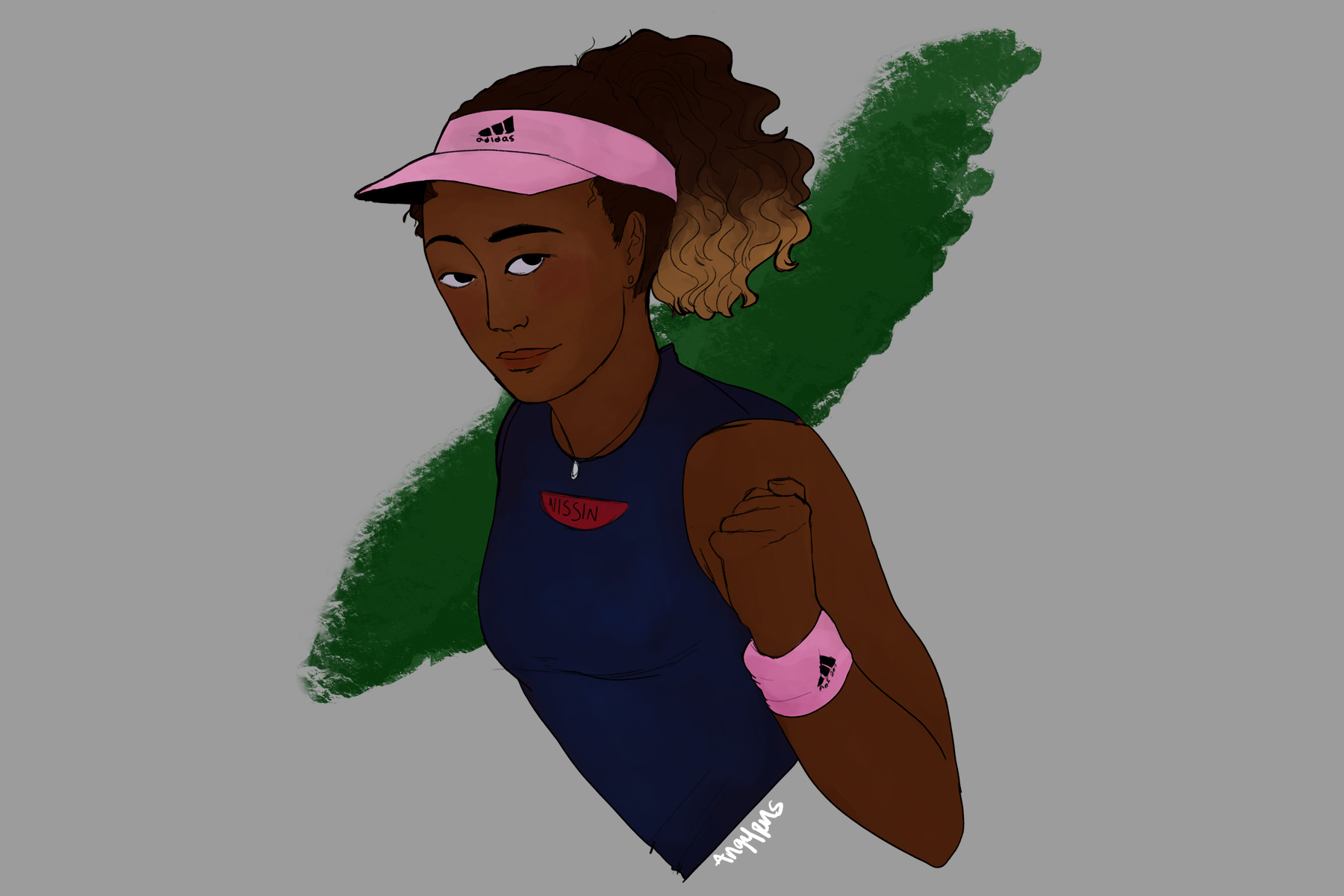In the world of professional tennis, another Grand Slam tournament has come and gone, but for the 2019 Australian Open, it was not Serena Williams who took home first place, but rising star Naomi Osaka.
With her second Grand Slam title, Osaka has marked herself in history as the first Asian tennis player to rank No. 1 for both men and women. If you’re not a fan of tennis, you might instead recognize Osaka’s name from a recent Japanese ad, which was accused of whitewashing the young tennis player.
For those unfamiliar with the term, whitewashing is exactly what it sounds like and looks like on paper — the act of washing-out and re-imaging an individual of color to have a whiter skin tone. Throughout the years, Hollywood has been infamous for this practice, replacing roles originally meant for people of color with white actors and actresses. To no surprise, whitewashing has also seeped into the advertising industry.
Nissin Foods Holdings, a Japanese noodle company that serves as one of Osaka’s sponsors, placed the tennis player in the forefront of a racial issue when it released an ad campaign depicting her in an anime-style tennis match against one of her competitors, Kei Nishikori.
The ad also featured characters from “Prince of Tennis,” a popular Japanese manga-turned TV show. It wasn’t the sight of the familiar characters that drew attention to the campaign, but rather, the hardly recognizable Osaka, who appeared to have a much lighter skin tone and narrowed nose.
Shortly after the ad’s release, critics, many of whom are fans of Osaka, scrutinized the campaign for whitewashing and misrepresenting the athlete, who has a rich biracial background thanks to her Japanese mother and Haitian-American father.
“I’m tan. It’s pretty obvious,” Osaka said when reporters asked for her opinion on the Nissin ad. The two-time Grand Slam winner added that while she didn’t believe Nissin purposely whitewashed her, she concluded her statement with some reservations. “I definitely think that the next time they try to portray me or something, I feel like they should talk to me about it,” said Osaka.
Because the controversy occurred just before her match against Petra Kvitova, whom Osaka would eventually outperform in order to secure the Australian Open title, Osaka remained calm over the ad debacle. The tennis star even mentioned how Nissin had contacted her, apologized and hoped to focus on the tennis final instead of the mess their ad had created.
As for the Japanese noodle company itself, Nissin spokesman Daisuke Okabayashi said, “There is no intention of whitewashing.” In all honesty, I believe that Nissin meant no disrespect to Osaka when creating the ad. Quite frankly, the ad was probably just a way to boost their sales. But Okabayashi later admitted, “We accept that we are not sensitive enough and will pay more attention to diversity issue in the future.”
While Nissin has been recovering from the unintended effects of its advertisement, the Japan-based company isn’t the only one guilty of whitewashing.
In October 2017, Dove released an ad on its Facebook page, depicting a black woman taking off her brown shirt and transforming into a white woman with a flesh-colored shirt. As you can imagine, the ad backfired on the company, resulting in Dove apologizing for missing “the mark in representing women of color thoughtfully.”
Despite the company’s apology, the personal-care brand has a history of whitewashing, including their 2011 campaign that features a “before and after” of a black woman who transforms into a white woman after using a Dove shower wash.
In Nissin’s case, you might be wondering how a Japanese company could have possibly gone wrong in representing a half-Japanese woman. For starters, the ad campaign and its animation style were designed by Takeshi Konomi, the Japanese manga artist who created “Prince of Tennis,” an anime piece that served as a model for Nissin’s campaign.
The problem lies within the style of Japanese anime, in which it’s typical for artists to draw their characters with seemingly Western characteristics of white skin and large eyes. Just as manga artists generalize all Americans as blue-eyed and blonde-haired, Western audiences misinterpret all Japanese characters as white, when, in fact, many Asians actually have pale skin, not tan.
In no way is this an excuse for Nissin’s ad, but it provides an understanding of Japanese culture that helps refocus viewers’ perspectives, equipping them with knowledge of cultural differences that played a factor in the campaign. Having said that, I believe that Nissin should’ve been more careful in their representation of Osaka, especially because she is biracial.
It’s also worthwhile to recognize that the ad campaign targeted a global audience, and not just citizens of Japan, which contributes to the outcries of whitewashing. The company released the ad to a culture that is hypersensitive to any signs of whitewashing or racism, and for good reason.
Whitewashing has stubbornly cemented itself in nearly every facet of the media, from magazines and commercials to television shows and mainstream movies. The often-unfulfilled desire for proper racial representation is why popular films such as “Black Panther” and “Crazy Rich Asians” have left a permanent mark on an industry that usually favors whiteness on the big screen.
The world won’t crumble into pieces and be set aflame from all the heat Nissin has received from critics, but could they have done better in their representation of Osaka? Definitely. If there’s anything positive to come out of the ad, it’s the reminder that whitewashing remains a global problem, one that everyone, especially companies, can learn from.
Ultimately, it’s not about Nissin but about representing Osaka in all her biracial greatness. The outstanding female athlete continues to represent Japan with pride on and off the court. Now it’s time for Japan to do the same in return.
















